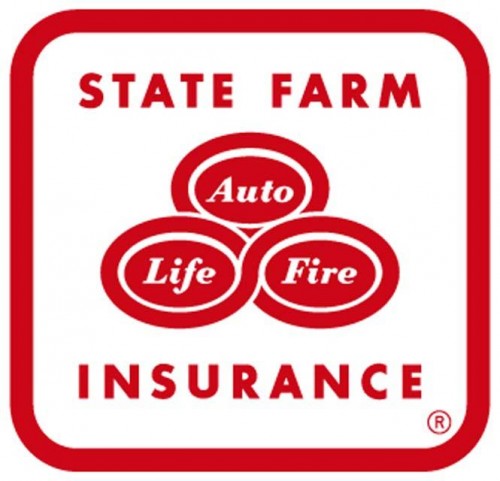Elmer "Lloyd" Matherne
February 15, 2010
Attempt to raise rates denied by insurance dept.
February 18, 2010I’m originally from North Carolina, hours away from Louisiana and even farther from the concept of Mardi Gras. Until last week, my run-in with parades consisted of a few high school bands and dance groups strutting their stuff on a cold and blistery day just before Christmas. Back home, parades come few and far between.
I’ve been living in this wonderful state now for merely three months.
The transition has been different, if nothing else: From mountains that rise above the city at 3,000 feet, to sprawling wetlands that dip into the ocean’s floor. I’ve seen both with my own eyes, but am starting to become accustomed to the somewhat murky mornings and cool afternoons this state, for some reason, likes to harvest.
Adding to the excitement: Mardi Gras, or what us folks up yonder would be quick to call a good excuse for a party.
I mean, when else can you peruse the streets of any city’s downtown area with a beer in your hand and a pound of beads around your neck and not get arrested? I’d be willing to bet, never.
And best of all, it’s free – or is it? While the reality may be far from the mind of the ordinary person, I decided to do a little digging to discover the true costs associated with one of the biggest “free” celebrations of all time.
The parades, the entertainment, it all comes with a price tag. It might not be easily visible, but it’s true.
For spectators of this spectacular event, the financial burden is less cumbersome. But for those in the limelight, the dollars can start to add up. And if it’s not money, it’s time.
Across the state, and even here in Houma, it seems that groves of people willing to put in a ridiculous amount of hours are what makes Mardi Gras, Mardi Gras.
In talking with people from the area, it became clear that dedication and a little bit of Cajun blood are what pulls it all together, especially for those riding in the parade. But it doesn’t stop there.
“Mardi Gras is a way of life for the people of south Louisiana,” said L.P. LaRussa, founder of the Houma-based Krewe of Hercules.
Insiders looking out
“It’s very fun, it’s like a high for the day,” explained Ann Thibodeaux, store manager for Cajun Enterprises in Houma. “It’s awesome. I mean, you’re on the float, you’re amped up and you’re ready.
“And to me, I think it’s in the blood,” she said.
Cajun Enterprises sits near Grand Caillou, a few miles away from the parade routes that course through downtown come carnival time.
For the last month, things have been anything but calm. Busloads of partygoers swarm the store each year, creating lines that take all day to disappear.
However, other shops in the area haven’t been so lucky, as the cost of doing business Mardi Gras-style is grossly underrated.
“I think when people get into this business, they think that it’s just, ‘We’re going to get all of this and we’re going to make a killing’,” said Thibodeaux. “They don’t realize how much work it is and how much time it takes to get this stuff. They all want a piece of the pie, but they don’t understand how much it entails.”
The majority of Mardi Gras paraphernalia is imported from China, which increases the price for local vendors.
A quick search on the Internet also reveals a certain level of Web-based competition, from sellers on sites like Ebay and Craigslist.
Trying to keep costs low is quite a feat, but with people willing to shell out more than a grand, I think there’s a little bit of leeway.
Prices in the small shop range from $23 for a case of about 720 “plain Jane” beads, to $65 for a case of more extravagant, larger beads. There is also an array of trinkets, toys and footballs, which can set you back about $50 per case.
This year, footballs sold out. And from the looks of it, other items aren’t far behind.
What people are willing to spend is still quite astonishing. The average ranges from $1,000 to $1,500, according to shop owners. “But I’ve seen people come in and drop $2,000 and $2,500,” explained the manager.
Tommy Thompson, an area resident that rode in parades Tuesday, said his spending for the season closely matched the average. Aside from the cartful of beads and plastic swords he pushed around Cajun Enterprises, he also buys items from his club, which is a part of the Krewe of Houmas.
This year, Thompson purchased about 600 footballs.
“I love Mardi Gras. It’s fun to see the kids enjoy it, especially when you throw them a trinket. It’s like being a rock star for a day and really, words can’t describe it,” he explained. But the Carnival season also has greater implications for the local economy.
The Krewe of Hercules has about 700 members, which spend about $1,500 each, according to LaRussa. Aside from Hercules, there are 12 other krewes in Houma, he said.
“Mardi Gras is the biggest economic development in Louisiana,” said LaRussa. From spectators buying gas, food and clothes to riders buying beads and trinkets, “…there’s more money spent in that eight to 10 day period, than any other time in the state of Louisiana for any other event.
“You’re doing this for two weekends straight,” he noted. “Everybody is spending money to entertain the public.”
With that, it’s obvious that Mardi Gras is much more than a party.
As so many have told me, it’s a way of life.











